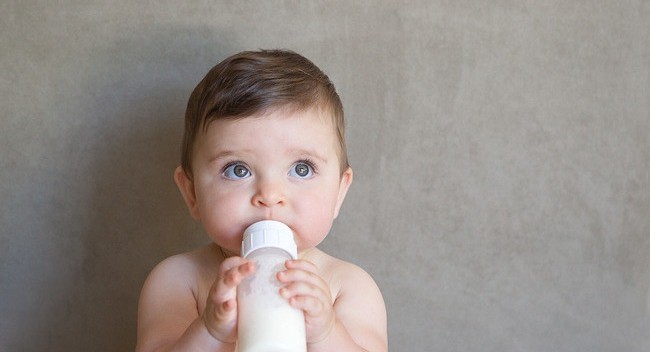Mixed feeding
Unfortunately, not all newly minted mothers have the opportunity to breastfeed their baby. Sometimes mother's milk is not enough and, in order to make up for the lack of vitamins and microelements, one has to resort to the help of special adapted formulas for children. How to properly feed your baby? What problems with stool can arise in this case? All answers in this article.
Content
Mixed feeding: how to properly organize
The principle of mixed feeding is to combine two methods - breastfeeding and special infant formula, and the ratio should be 1: 1. If most of the baby feeds on formula, this is called artificial feeding.
Usually, this type of feeding has to be resorted to for those mothers who have reduced lactation, or for some reason they do not have the opportunity to breastfeed, and there is not enough expressed milk.
Mixed feeding implies natural attachment to the breast until it is completely empty, only then can the baby be offered a bottle. In this case, a technique is especially popular when an imitation of natural feeding is created using a special device - child sucks at the breast, but receives the mixture from the bottle. The nipple should be of a special shape and tight enough for the baby to exert efforts and thereby stimulate the sucking reflex.
To avoid the unpleasant consequences of mixed feeding, the following rules must be followed:
- The selection of the mixture takes place individually and only after consultation with a specialist who will help you choose the portion size.
- Complementary feeding should be carried out only after attachment to breasts... The fact is that it is not so easy to receive milk from the mother's breast, and a hungry baby will suck intensively.
- Night feeds are essential for maintaining lactation.
- It is best to use a nipple with a small hole so that the baby can work hard to get food.
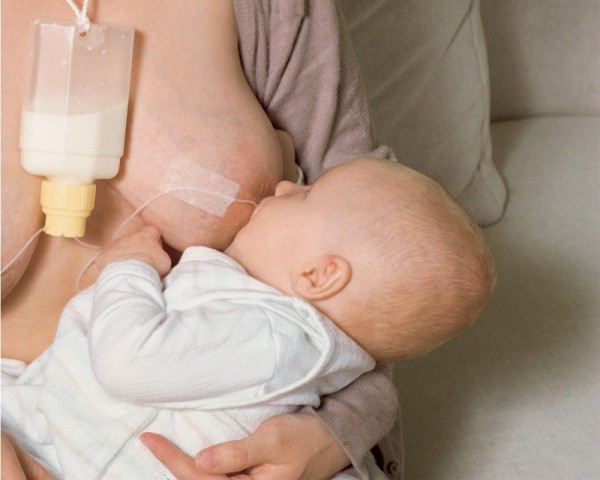
Mixed feeding formulas
The first rule when choosing a formula for mixed feeding is to get one where the amount of dry powder will be used as little as possible, then there is a chance to preserve breast milk for a longer time.
If necessary, switching to this type of feeding, mothers are wondering which mixture to choose. Of course, the pediatrician will provide you with all the information in more detail, but you can find out general information about the varieties of the mixture yourself:
- The best product is the mixture that is as close as possible in composition to breast milk. It's called highly adapted. Ideal for babies under 6 months of age (Nan, Nutrilon, Hipp, Humana, etc.). There are also partially adapted on casein (a complex protein of slow absorption), they can be purchased if there is a problem of frequent regurgitation, and transitional, which are suitable for children over six months.
- There are regular, standard formulas for healthy babies and special ones for premature babies or children with allergies.
- Experts distinguish fresh and acidophilic (fermented milk) mixtures, the latter are very helpful if the baby suffers from constipation and colic.
- If baby expressed lactase deficiency, choose low-lactose "Nutrilak", "Nutrilon" or "Humana" with prebiotics.
- In case of lactose intolerance, the mixture on cow's milk is replaced with a product for soy of various brands.
Mixed feeding baby menu
The mixture must be introduced into the child's menu with caution, starting from 10-20 ml. If the acquaintance with the new product was successful, you can bring the serving size to the required norm. It is recommended to choose only one brand of mixture that suits the crumb, frequent change leads to malfunctions of the stomach and intestines.
To keep milk a woman you should breastfeed at least three times a day, it is good if it will be both morning and evening feeding, when milk production is most active. The number of feedings with the mixture depends on the daily nutritional intake, and it, in turn, on the age of the baby. Usually, in the first two weeks, a newborn needs 9-10 meals, a child up to six months - at 6-7, older children can be fed with a mixture 5 times a day.
First, offer the hungry baby a breast, if he refuses, do not rush to grab the bottle, try to wait a little and try again. If the main diet is still breast milk, the baby can be supplemented with a spoon or bottle.
Usually, doctors advise artificial children to start feeding adult food no earlier than 4-5 months, toddlers breastfed - after 6 months. When to start feeding their child, each parent decides for himself, but it is better that it be under the supervision of a specialist. In general, the diet with a mixed diet differs little from breastfeeding, at 7 months the child usually already tries new products (meat, fish, vegetables, fruit purees, cereals, juices, cottage cheese) gradually and in small portions. The mixture is given three times a day - in the morning, at lunchtime and in the evening, and the chest is usually on demand. 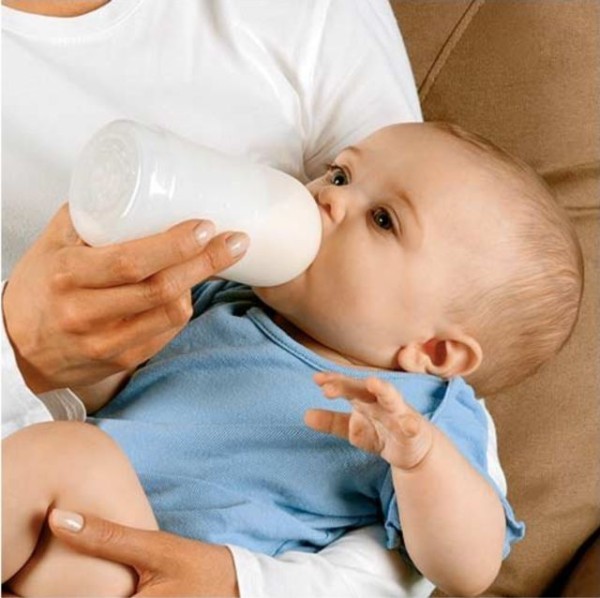
Mixed feeding water
Supplementing a baby with water with mixed feeding is one of the most pressing issues that worries all mothers, without exception. Moreover, the opinion of doctors on this matter is ambiguous.
Up to 3-4 months of life, breast milk serves as a baby and food and drink, it maintains the balance of fluid in the body at the proper level. In addition, the composition of milk can be changed and regulated depending on the needs of the crumbs. If the baby often lays on the breast, therefore, receives more front milk, it is not as nutritious as the back milk and perfectly quenches thirst. 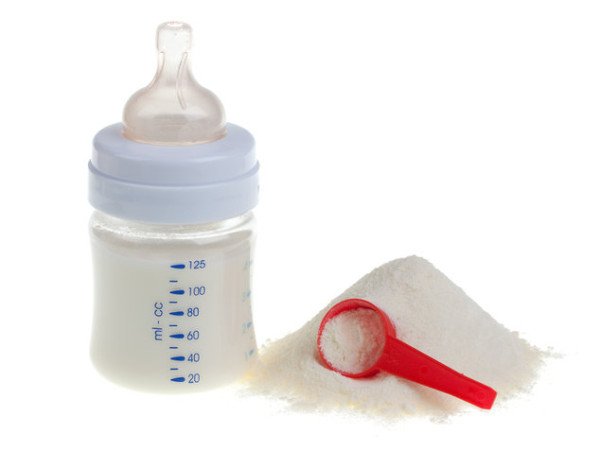
But the situation is different when it comes to mixed or bottle feeding, lack of fluid can lead to constipation and poor health. toddler... Adapted formulas contain more protein than a woman's milk, so you need to supplement your baby from the first days of life. Children on a mixed diet also need additional fluid, but in smaller amounts, on average, 100-200 ml of water is enough for an infant. You can drink from a bottle or from a spoon, but only if necessary, and not adding liquid to the total amount eaten. In the hot season and during the period of illness, the child's body needs more water. Warm water can also help with hiccups.
When a child begins to try new, adult food, water becomes simply necessary, so it is worth teaching the child to it in advance. It is best to purchase special bottled water for this, it has a balanced composition of salts and microelements. As a last resort, you can use ordinary boiled water cooled to room temperature. 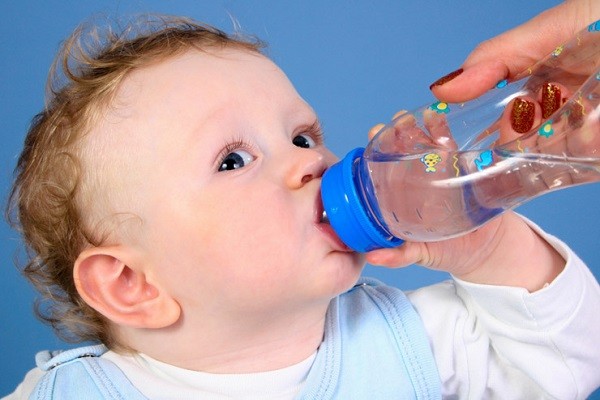
Mixed-feeding stool
When breastfeeding, improving functioning Gastrointestinal tract the child is relatively painless. But after the introduction of the mixture into the diet, unpleasant changes may follow. The crumbs may develop bloating, increased gas formation and skin rashes. This indicates that the mixture is not suitable for the child; it must be urgently replaced after consulting a pediatrician.
As for the mixed-fed stool, in consistency it is less liquid and more shaped (it all depends on the amount of the mixture received) than in the breast, its color is darker and has an unpleasant odor, like in an adult, the process of defecation can occur 2-3 times in a day. If white grains are found in the feces, then the stomach does not have time to cope with the volume of food, this is a reason to consult a specialist.
Children on artificial food can also suffer from too frequent, loose stools. The reason lies in the violation of the intestinal microflora due to mixtures. Colic, bloating, pain are also considered symptoms of dysbiosis. Most often, over time, the problem disappears by itself, gradually the intestines are colonized by microorganisms and everything returns to normal. But sometimes you need to solve this problem by taking probiotics. 
Mixed feeding constipation
In the first year of a child's life, constipation is a very common phenomenon. This is probably one of the most exciting topics for moms, besides colic. If you notice that the child, when trying to empty the intestines, is stewing, grunts, blushes and cries, does not go to the toilet for more than two days, then the first signs of constipation have appeared. At the same time, the stool becomes more firm, like that of an adult.
What are the reasons for this phenomenon if the baby is on mixed feeding?
- Artificial formula is still not the best type of food for newborns, it is highly likely that it will not suit the child, unpleasant consequences will arise in the form of allergies, bloating and constipation.
- Proper nutrition is very important, underfeeding or overeating is not useful for a fragile child's body. If the baby does not want to finish eating the prescribed portion of the mixture and at the same time feels good, you do not need to force him, but at the same time watch the weight gain.
- Children on artificial and mixed nutrition need additional liquid, be sure to supplement the child with water.
- The reason may be the wrong, untimely type of complementary foods.
- Low physical activity is the cause of constipation in both adults and children.
- Serious diseases can be a factor affecting the occurrence of problems with defecation. intestines that only a specialist can diagnose.
Constipation for a small child is very dangerous, it can cause intoxication of the body, and hardened feces often damage the mucous membrane of the anus. Therefore, to strengthen the abdominal muscles, often lay the child on his tummy, massage in a clockwise direction. As a last resort, a gas outlet tube or micro enema will help get rid of excess gas and empty the intestines. 
Mixed feeding: reviews
Parents' opinions about mixed feeding are significantly divided, which is fully explained by the individual characteristics of the child's body. Someone tolerates such nutrition well, without showing any "side" manifestations, while others react even to minor changes with a whole range of symptoms. But, as a rule, people come to mixed feeding not of their own free will, but out of need. Try to constantly and in all consult with a pediatrician, listen to his advice and then, the risk of problems will be minimized.
